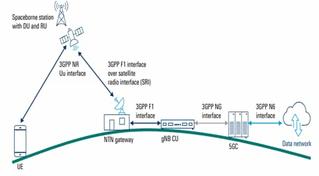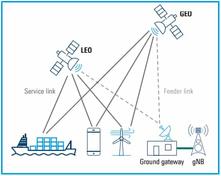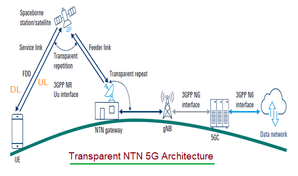5G UE categories:NTN,Terrestrial,IoT,Handheld,VSAT
Advertisement
NTN User Equipment (UE) can be categorized in several ways. The most important is based on device’s form factor and RF capabilities. There are handheld devices and VSATs.
1. By Form factor and RF capabilities
1.1 Handheld or IoT devices
This category represents the move towards direct to device satellite connectivity for the mass market. These are devices comparable to modern smartphones or low power IoT sensors. They are designed for mobility and convenience. Some features are as follows.
- Supports maximum transmit power of about 23 dBm (200 mWatts).
- Uses small and omni-directional antennas with assumed gain of 0 dBi.
- Typically uses simple linear polarization.
- Use cases :
- Mobile Satellite Services (MSS) for basic connectivity (messaging, voice) in remote areas.
- IoT-NTN applications, such as asset tracking, environmental monitoring, or agriculture sensors.
1.2 VSATs
This category represents higher performance terminals used for more demanding applications. These are larger terminals that are either stationary (fixed on a building) or mounted on moving platforms like vehicles, ships, or airplanes. They are not handheld. Some features are as follows.
-
Supports higher transmit power such as 33 dBm ( 2 Watts)
-
Use directional antenna with higher gain (usually 40 dBi)
-
Often use circular polarization (RHCP/LHCP) to be more robust against atmospheric effects and orientation changes.
-
Use case :
- Fixed Satellite Services (FSS) for providing broadband internet to homes or businesses in underserved areas (e.g., SpaceX Starlink).
- Connectivity on the move for airplanes (in-flight Wi-Fi) and maritime vessels.
- Cellular backhaul, connecting a remote terrestrial base station to the core network.
2. By Network & Service Capability
UE can be categorized based on networks and services they can access.
2.1 By Supported RAT (Radio Access Technology)
- Terrestrial-only UE: A standard 5G device that cannot connect to NTN.
- NTN only UE: A specialized device that can only connect to satellite networks.
- Dual Mode UE (Terrestrial + NTN): A device capable of connecting to both terrestrial 5G networks and 5G NTN. This is the most complex category and the one relevant for service continuity and mobility between the two network types.
2.2 By Supported Service Type
- NR NTN Capable UE: A UE designed for mobile broadband services, focusing on data rates and connectivity.
- IoT NTN Capable UE: A UE designed for machine type communication (e.g., NB-IoT, eMTC). The design prioritizes low complexity, long battery life and power efficiency over data speed.
Key notes:
- All NTN capable UEs are assumed to have Global Navigation Satellite System (GNSS) capabilities.
This is essential for UE to perform following.
- Determine its own terrestrial location.
- Use this location data along with the satellite’s ephemeris (orbital data) to pre compensate for the timing advance (delay) and Doppler shift (frequency) before even trying to connect.
Advertisement
 RF
RF

